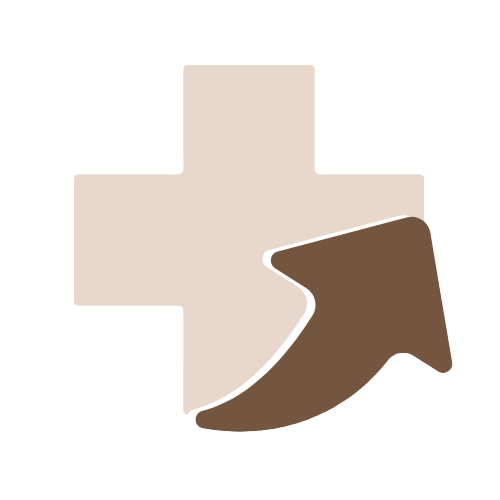Goiter
Overview
Goiter refers to an abnormal enlargement of the thyroid gland, which is located at the front of the neck just below the Adam’s apple. The thyroid gland plays a crucial role in regulating metabolism through the production of thyroid hormones. A goiter may develop without affecting thyroid function or it may be associated with either hypothyroidism (underactive thyroid) or hyperthyroidism (overactive thyroid). Goiters can vary in size, ranging from small and barely noticeable enlargements to large masses that cause visible swelling in the neck and can sometimes interfere with breathing or swallowing.
Causes
There are several causes of goiter, and they are broadly categorized into iodine-related and non-iodine-related factors:
- Iodine deficiency: The most common global cause of goiter. The thyroid requires iodine to produce hormones, and a deficiency leads to enlargement as the gland tries to compensate.
- Autoimmune diseases: Conditions like Hashimoto’s thyroiditis (hypothyroidism) and Graves’ disease (hyperthyroidism) can cause thyroid swelling.
- Thyroid nodules: Growth of lumps or cysts within the thyroid can cause it to enlarge.
- Thyroid cancer: Although rare, thyroid cancer may present as a goiter with a dominant nodule.
- Hormonal changes: Pregnancy and puberty can temporarily stimulate thyroid growth.
- Inflammation: Thyroiditis or inflammation of the thyroid gland can lead to goiter.
- Certain medications: Drugs like lithium and amiodarone can induce thyroid enlargement.
- Genetic predisposition: A family history of thyroid disorders increases the risk of developing goiter.
Symptoms
The symptoms of goiter depend on its size and impact on thyroid function:
- Visible neck swelling: The most noticeable symptom is a swelling at the base of the neck, which may be symmetrical or more prominent on one side.
- Tightness in the neck: Especially when wearing collars or necklaces.
- Difficulty swallowing: Large goiters may press on the esophagus.
- Difficulty breathing: Very large goiters can compress the windpipe, causing shortness of breath or wheezing.
- Hoarseness: Pressure on the laryngeal nerves may alter voice quality.
- Thyroid dysfunction symptoms: In cases of hyperthyroidism – weight loss, tremors, palpitations; in hypothyroidism – weight gain, fatigue, dry skin, and cold intolerance.
Diagnosis
Diagnosing a goiter involves a combination of physical examination, laboratory testing, and imaging studies:
- Physical examination: A doctor feels the neck area to assess the size, texture, and presence of any nodules.
- Blood tests: Thyroid function tests (TSH, T3, T4) help determine if the thyroid is underactive, overactive, or functioning normally.
- Ultrasound: A non-invasive imaging test that shows the structure of the thyroid, detects nodules, cysts, and determines the extent of enlargement.
- Radioactive iodine uptake scan: Evaluates thyroid activity, useful in cases of hyperthyroidism to distinguish the cause of goiter.
- Fine-needle aspiration biopsy: May be performed to assess thyroid nodules for malignancy.
Treatment
Treatment for goiter depends on the underlying cause, the size of the goiter, and the presence of symptoms:
- No treatment (observation): Small, asymptomatic goiters with normal thyroid function may simply be monitored regularly.
- Iodine supplementation: In iodine-deficient areas, increasing dietary iodine or taking supplements can reduce goiter size.
- Thyroid hormone replacement: For hypothyroidism (e.g., Hashimoto’s), levothyroxine is prescribed to normalize hormone levels and may reduce goiter size.
- Antithyroid medications: In hyperthyroidism (e.g., Graves’ disease), medications like methimazole help control hormone levels and reduce goiter.
- Radioactive iodine therapy: Used primarily in hyperthyroid patients to shrink the goiter by reducing thyroid activity.
- Surgery (thyroidectomy): Indicated in large goiters causing compressive symptoms, cosmetic concerns, or when cancer is suspected.
Prognosis
The prognosis of goiter is generally favorable with proper management:
- Benign course: Most goiters are non-cancerous and manageable with medication or observation.
- Reversible in early stages: Goiters caused by iodine deficiency or mild hormonal imbalance can improve with appropriate treatment.
- Complications in untreated cases: Large or neglected goiters can lead to airway obstruction, difficulty swallowing, or long-term hypothyroidism or hyperthyroidism.
- Good surgical outcomes: Surgery offers an effective solution in symptomatic cases, with low risk when performed by experienced surgeons.
- Life-long monitoring: Some patients, especially those with chronic thyroid disorders, may require long-term follow-up and medication.
With early diagnosis and appropriate treatment, most people with goiter lead healthy lives with minimal complications.
